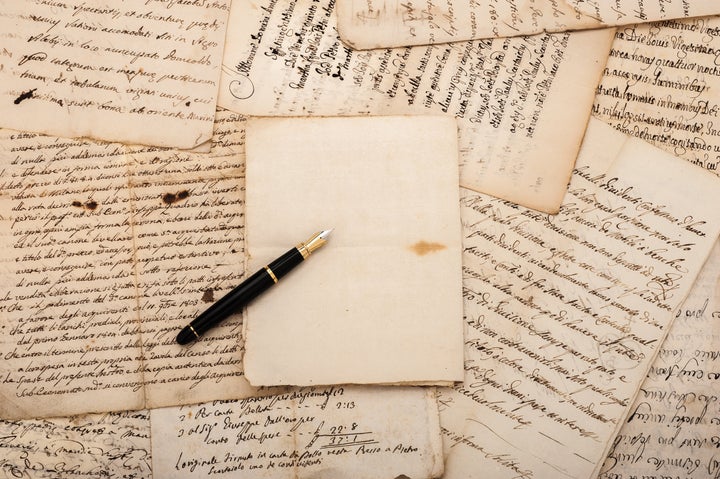
Handwriting played a big role in our lives as students while we were growing up — those with good, neat handwriting were often praised by the teachers in school. Those of us who weren’t blessed with a natural flair for handwriting and wrote in tiny scrawls, had to bare the brunt of the teacher’s anger. Now, as an adult I understand what a headache it must have been for teachers to read and decipher what we had written.
During my summer holidays in Class 9, while walking around with my mother on Brigade Road, we entered a shopping centre where Bril was conducting a handwriting contest. I entered it for a lark and forgot all about it. Although the writing sample I submitted was much neater than my usual chicken scrawl.
For the latest news and more, follow HuffPost India on Twitter, Facebook, and subscribe to our newsletter.
I was in for a surprise when school reopened and my name was announced in the assembly because I had won. Maybe not many people had participated, I thought. But even then, it was wholly unexpected and delightful at the same time. As part of the prize I got a good stash of inks from Bril, as well as a gift certificate from a bookstore that I used to buy a couple of books for myself. For many years, it would be the only prize I would go to win, and I soon became embarrassed about it. It didn’t seem to be something that exciting or worth telling anyone about.
My handwriting evolved as I grew older. From tiny ant-like letters to slanting curves, I tried it all. I couldn’t quite stick to one style, unlike most people whose handwriting stayed the same. Now, because of lack of practice, it’s almost impossible for me to write something neatly using pen and paper. At the same time, whenever I make plans to write a new book, I first make notes by hand. Of course, this is also an excuse to hoard more stationery.
Other writers say they follow a similar process. Aarti V Raman, author of Kingdom Come and With You I Dance said, “I always plot my stories in my notebook. Writing it down by hand makes things clearer for me.”
The process of putting my thoughts down on paper has an effect on me that typing doesn’t. It helps me streamline my thoughts and ideas, physically calms me and makes the words flow with the stream of consciousness. I ask myself questions, I ridicule my own ideas and pat myself on the back for brilliant plans for my characters that take me by surprise.
While typing has become the norm now, Milan Vohra, author of The Love Asana, said she writes her entire first draft by hand, a feat that leaves me speechless. She even has specific conditions. “The paper needs to be loose recycled sheets of A-4 size that I feel free to let the words race across. A fresh untouched sheet is daunting, it puts too much pressure to make the writing be good. The pens have to be light, the throwaway gel pens kind. And there is nothing that feels better than chucking those pens as they run out because it means you are on a roll. And no better feeling too of looking at a handwritten manuscript once it’s been published,” Vohra said.
As someone who types fast, I can’t imagine how much I’d have to slow down if I had to write my novels by hand. But, the making of plans for characters, putting down notes by hand gives a ‘just beginning a new book’ high that is hard to recreate when you’re typing on a laptop. My chicken scrawl has returned and in a way, I’m glad. If anyone were to pick up my notebooks accidentally, they’d never be able to decipher my writing and this is a good thing, because I don’t want them to read the plots of my books
Schools seem to consider handwriting as important as they did during my childhood. Every year, without fail, my son gets a mandatory handwriting practice book from school along with his other textbooks and stationery. Students still have to write as much as we had to.
While I envy people with perfect and beautiful handwriting, I keep telling myself that it’s the content that matters and not the presentation – pretty much the opposite of what every marketing guru might tell you. But untidy handwriting does tend to run in my family because my brother’s is quite terrible too. (At least I won an award, I tell myself!). My father wasn’t pleased with his own handwriting either. But the little I saw of him writing (when he addressed envelopes etc), there was a certain flair and flamboyance which was intrinsic to who he was as a person.
When he stayed in Hong Kong for work, he would often send us letters, but these were typed on thin transparent sheets of paper, maybe because he was reluctant to put pen to paper and form words in a language he was not very familiar with. However, he used to write letters to my mother in Urdu and she would read them out to us sometimes. Listening to them made the words sound real, and it felt like I was listening to him speak once again. Letters are the stand-in we have for him, for the times we miss him, because as the old Chinese proverb goes, “the palest ink is better than the best memory.″